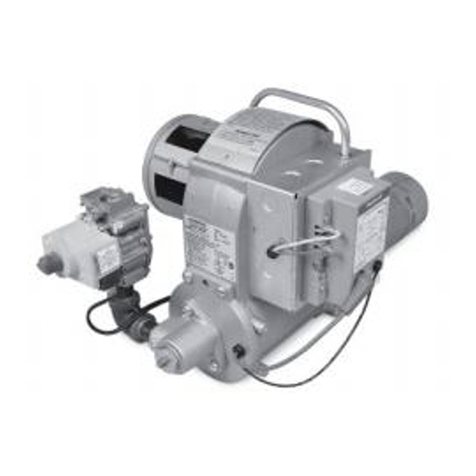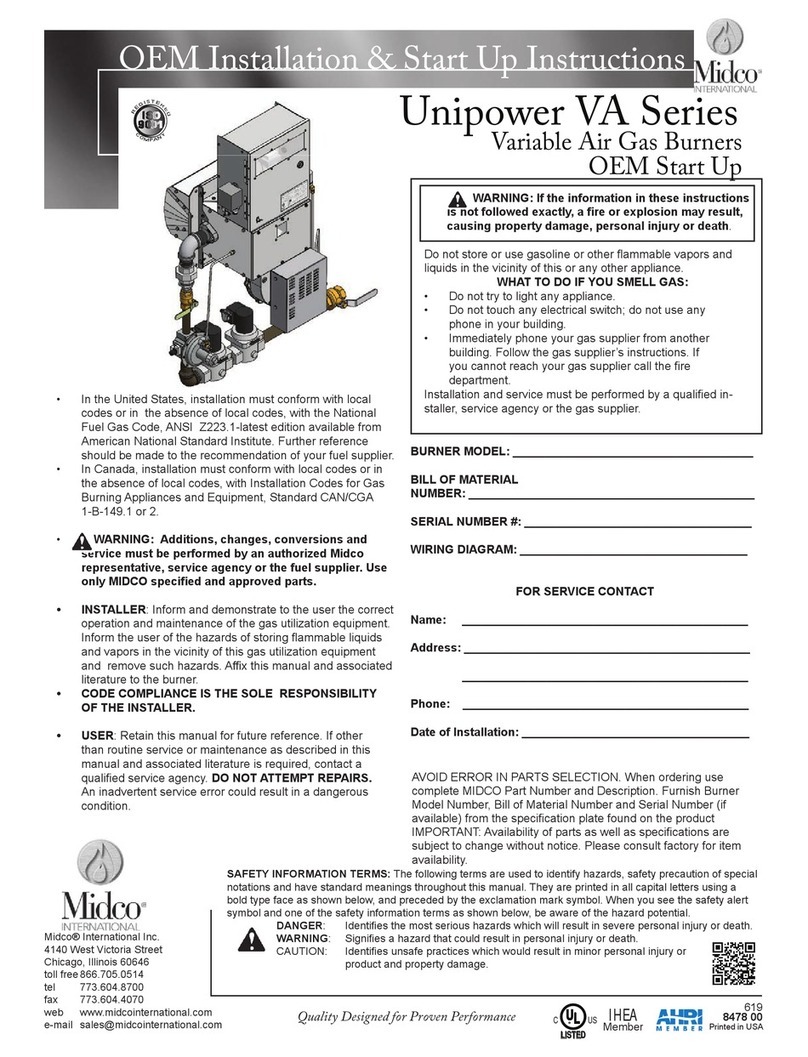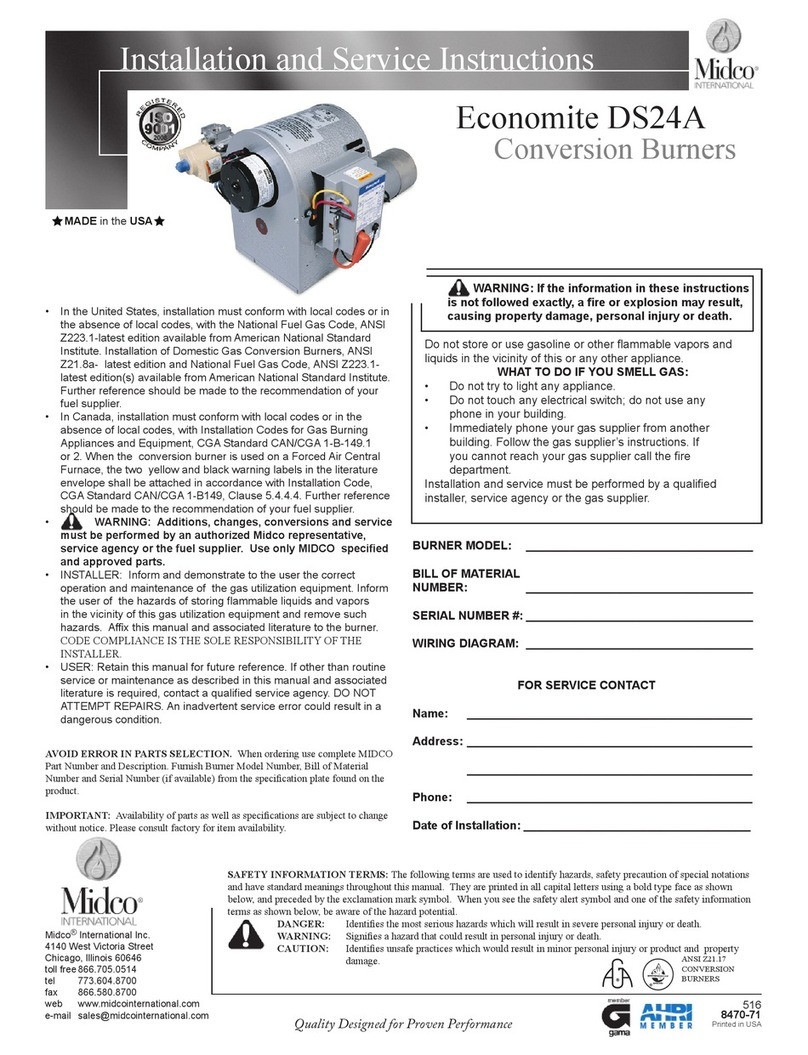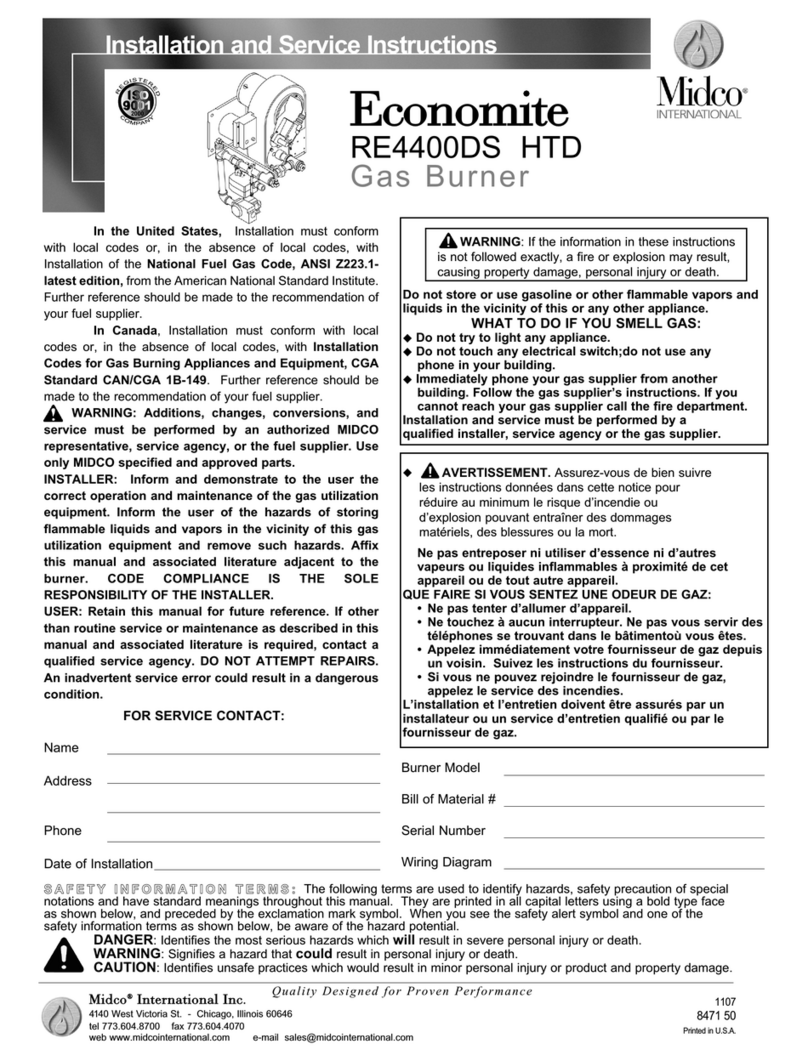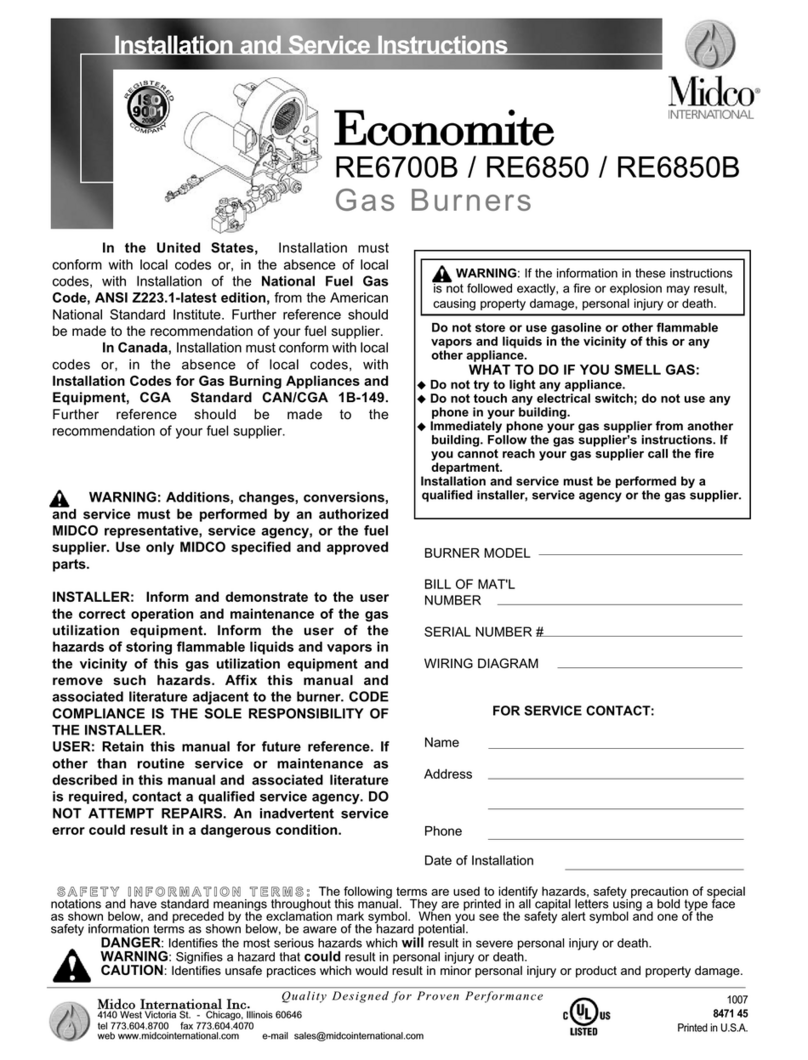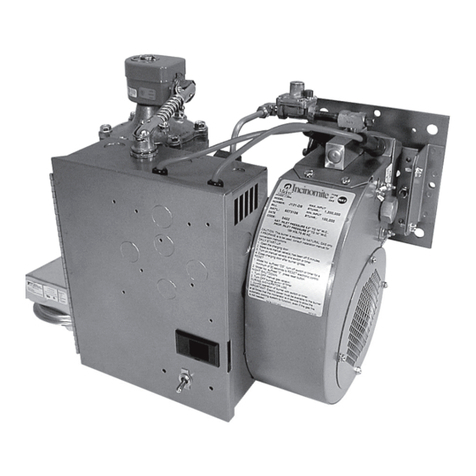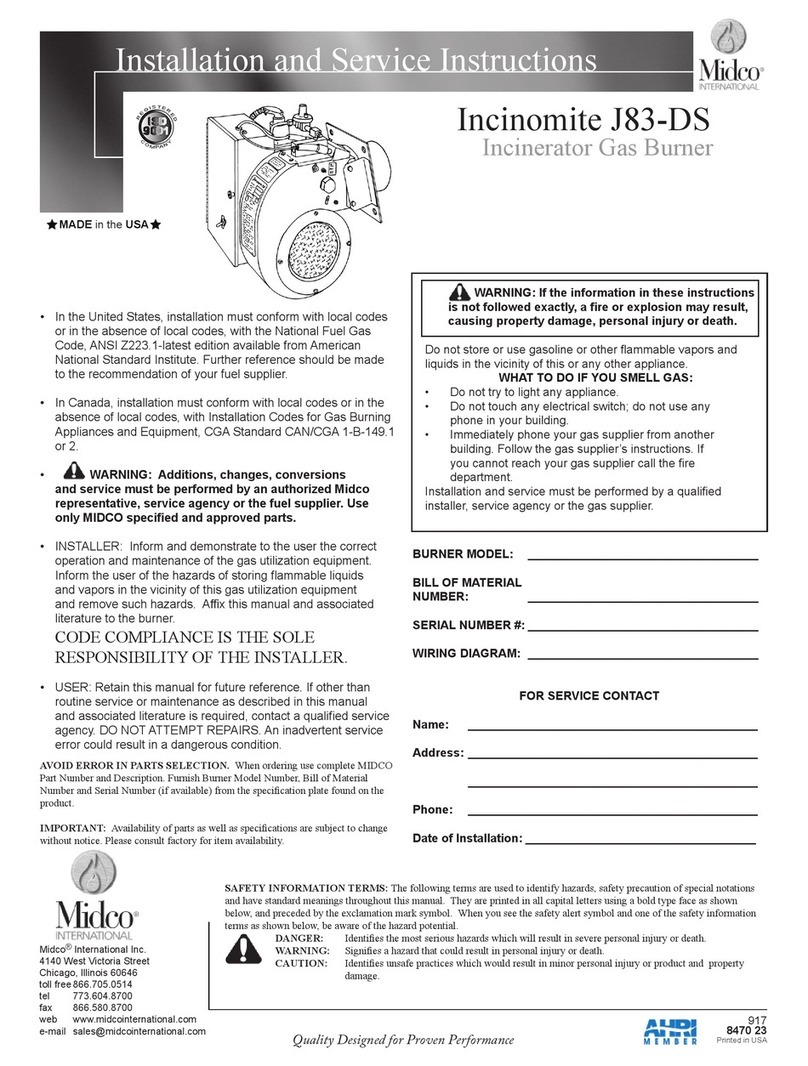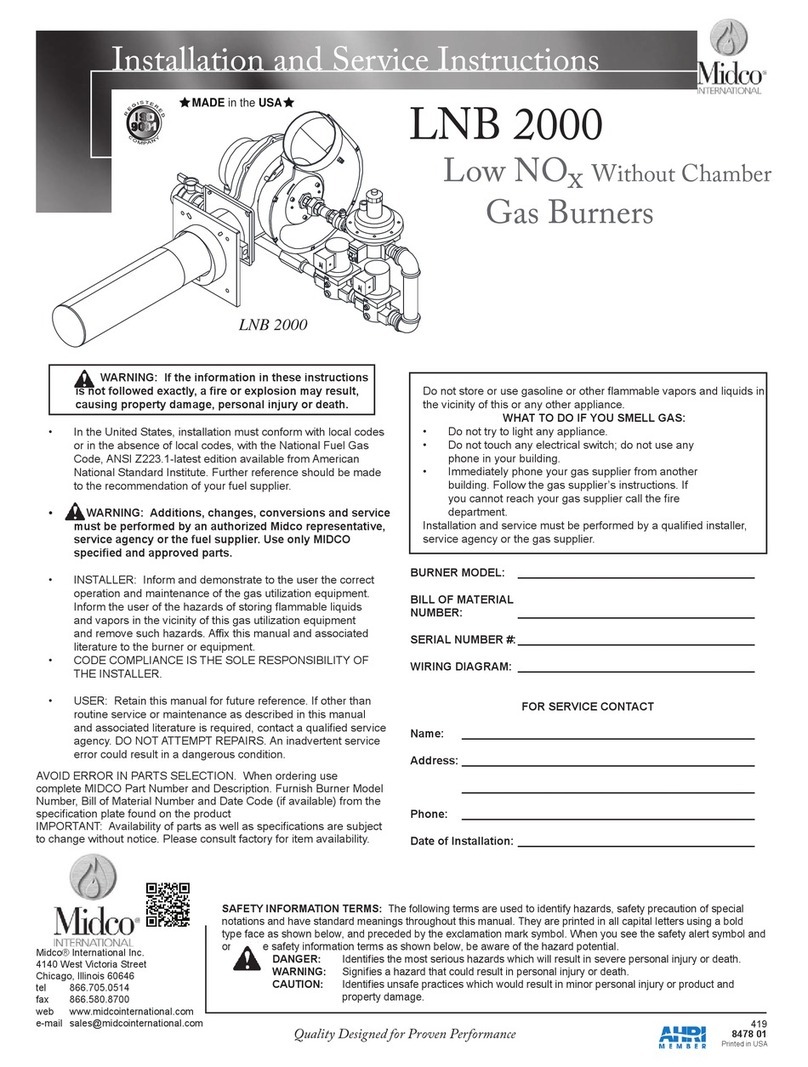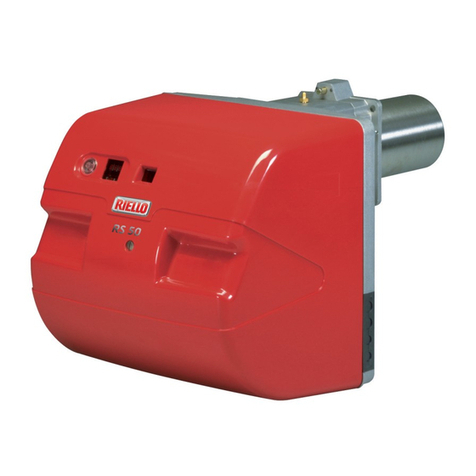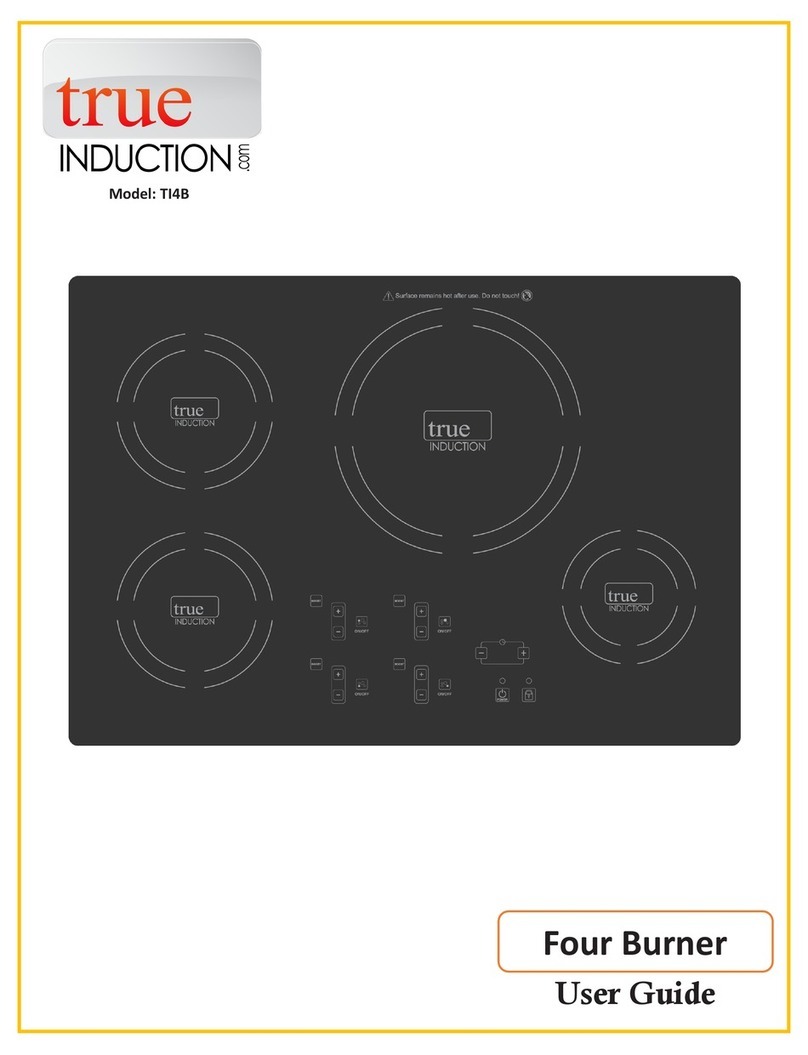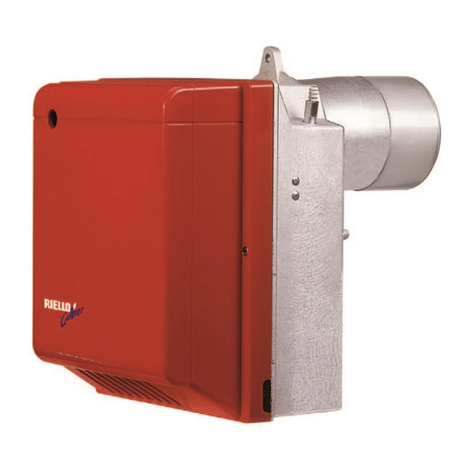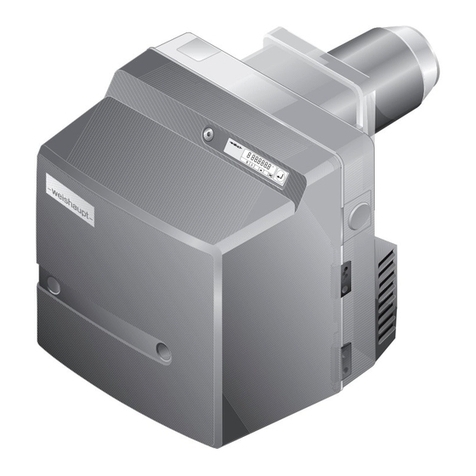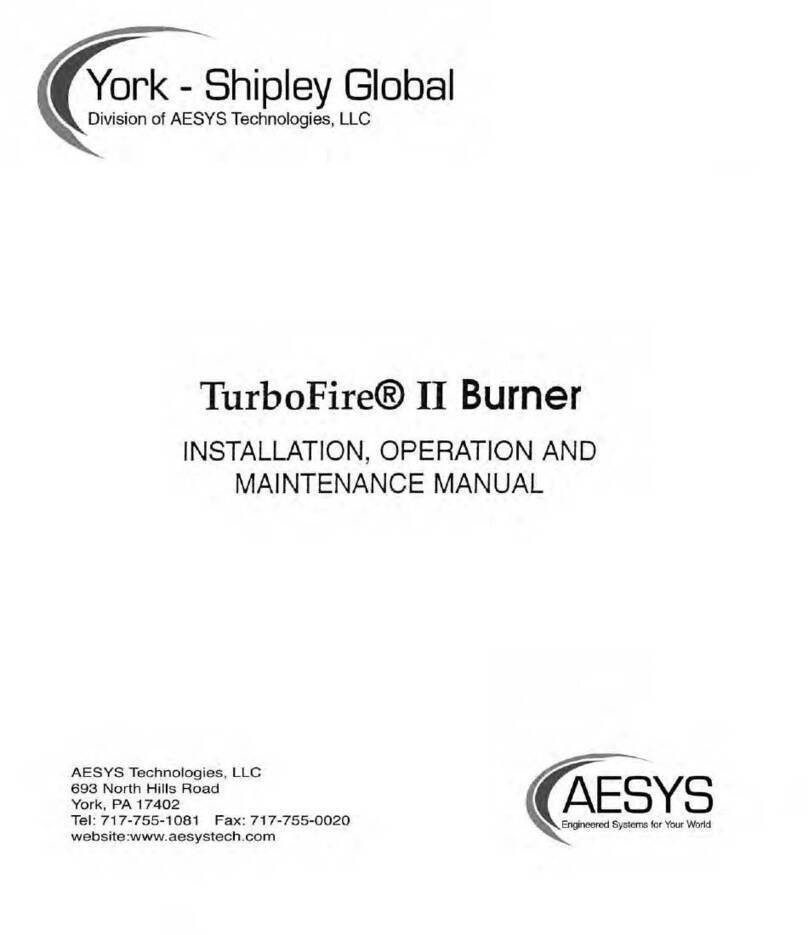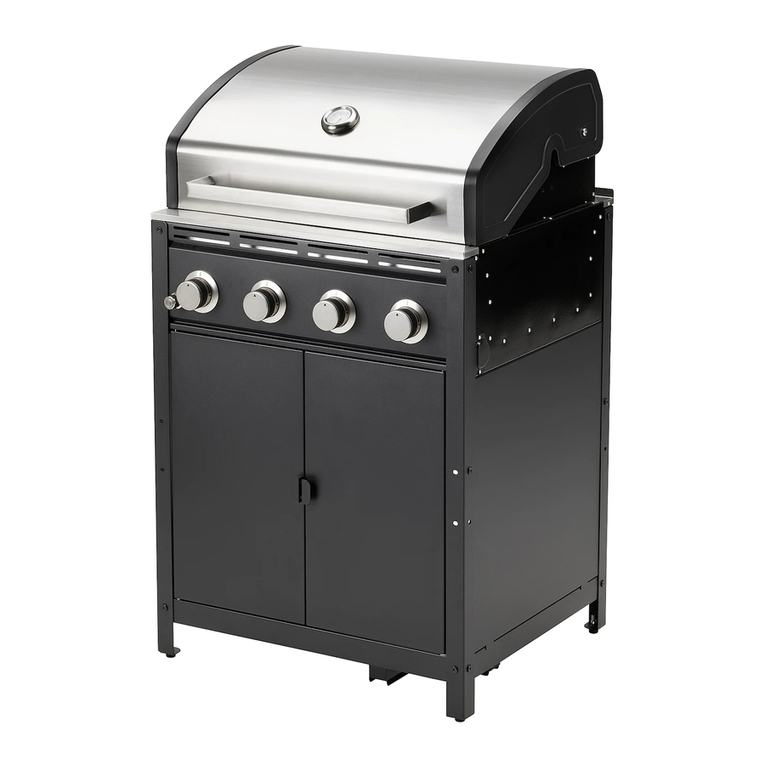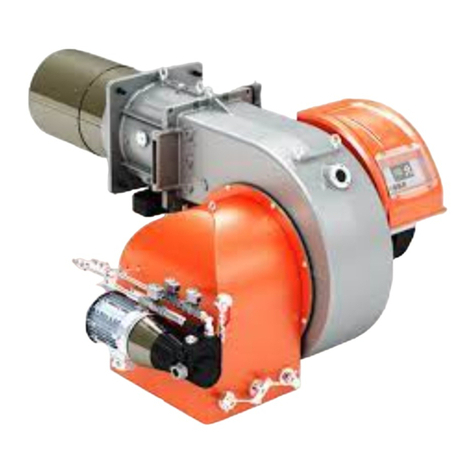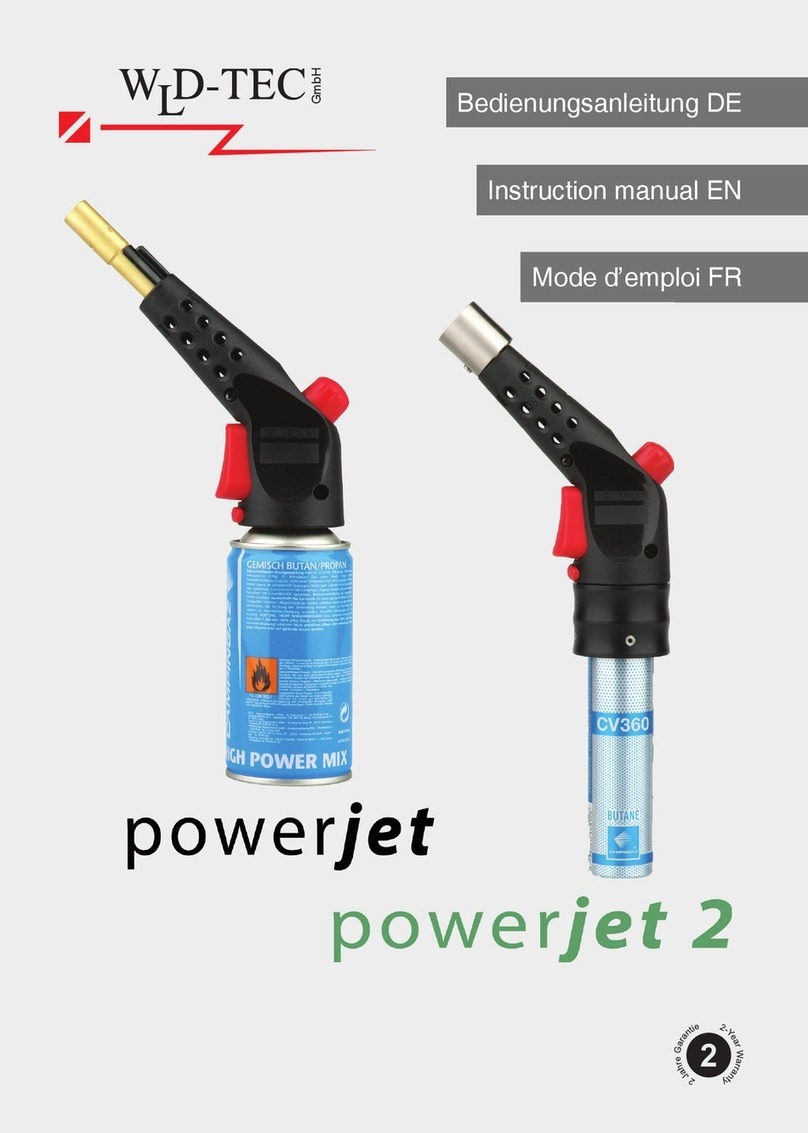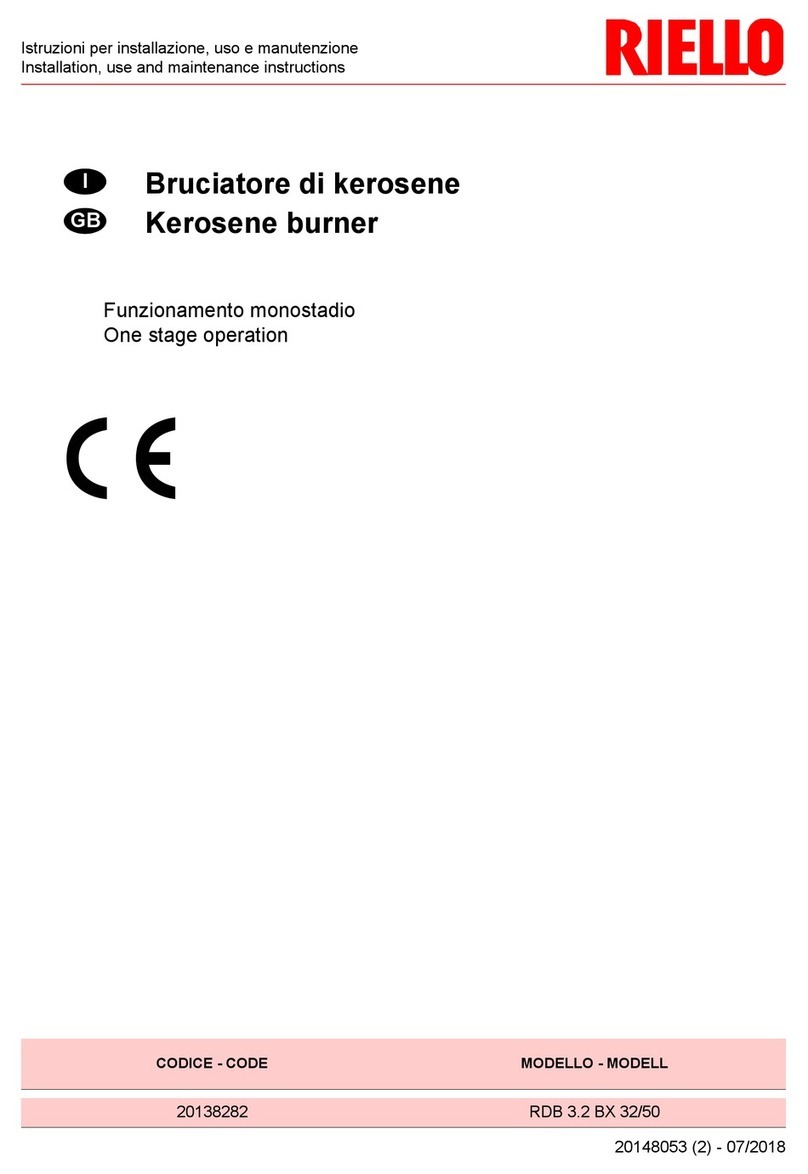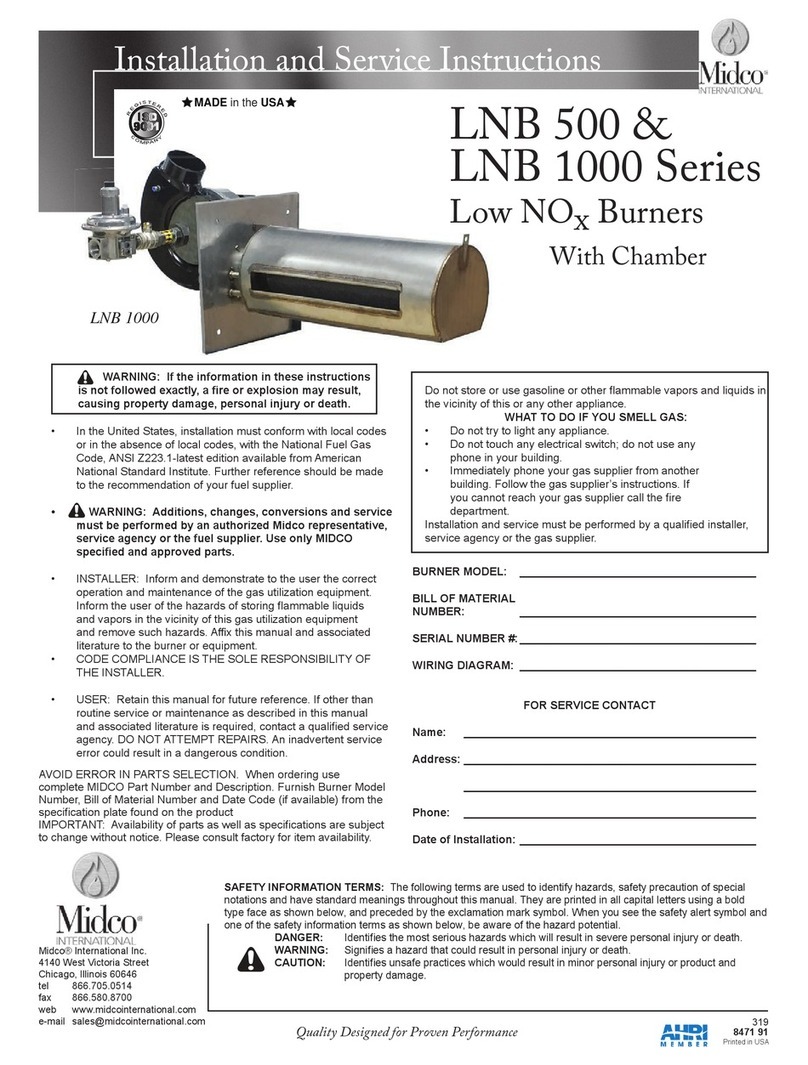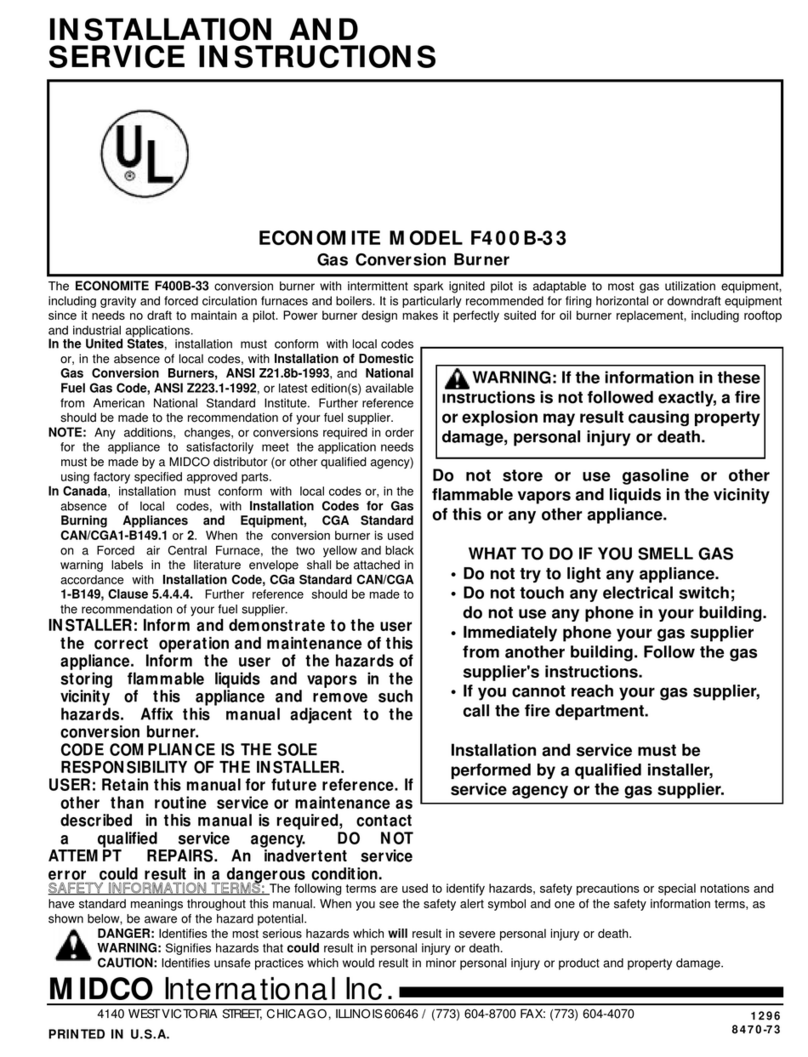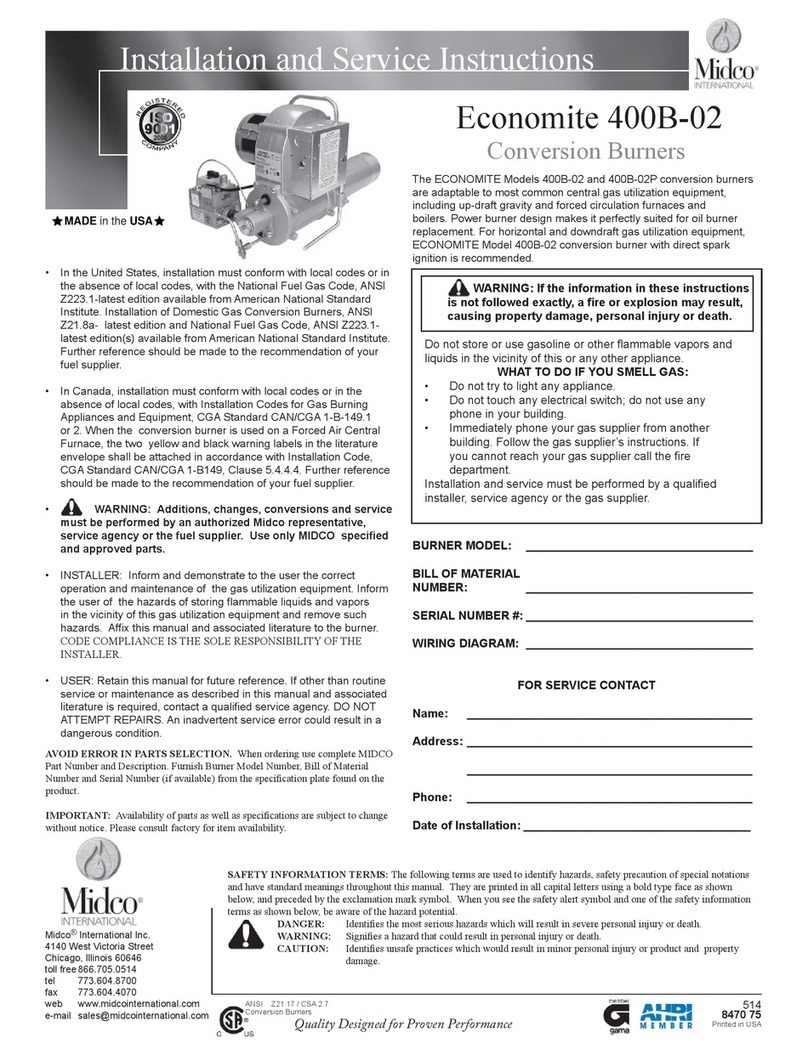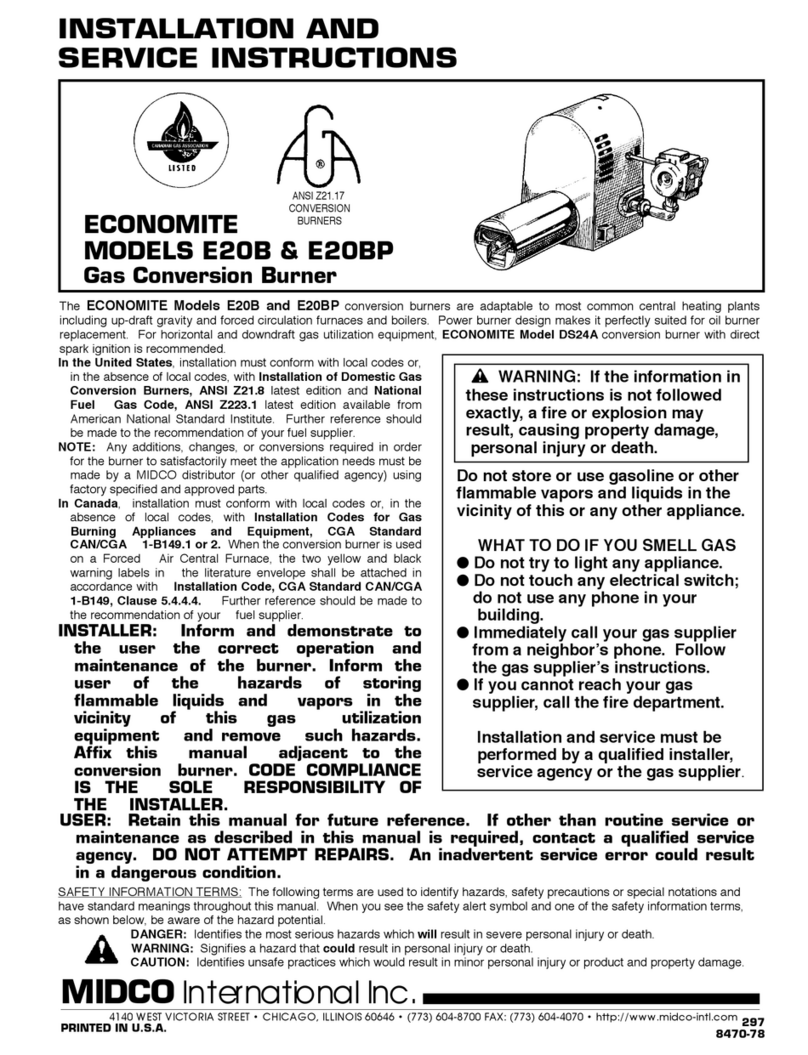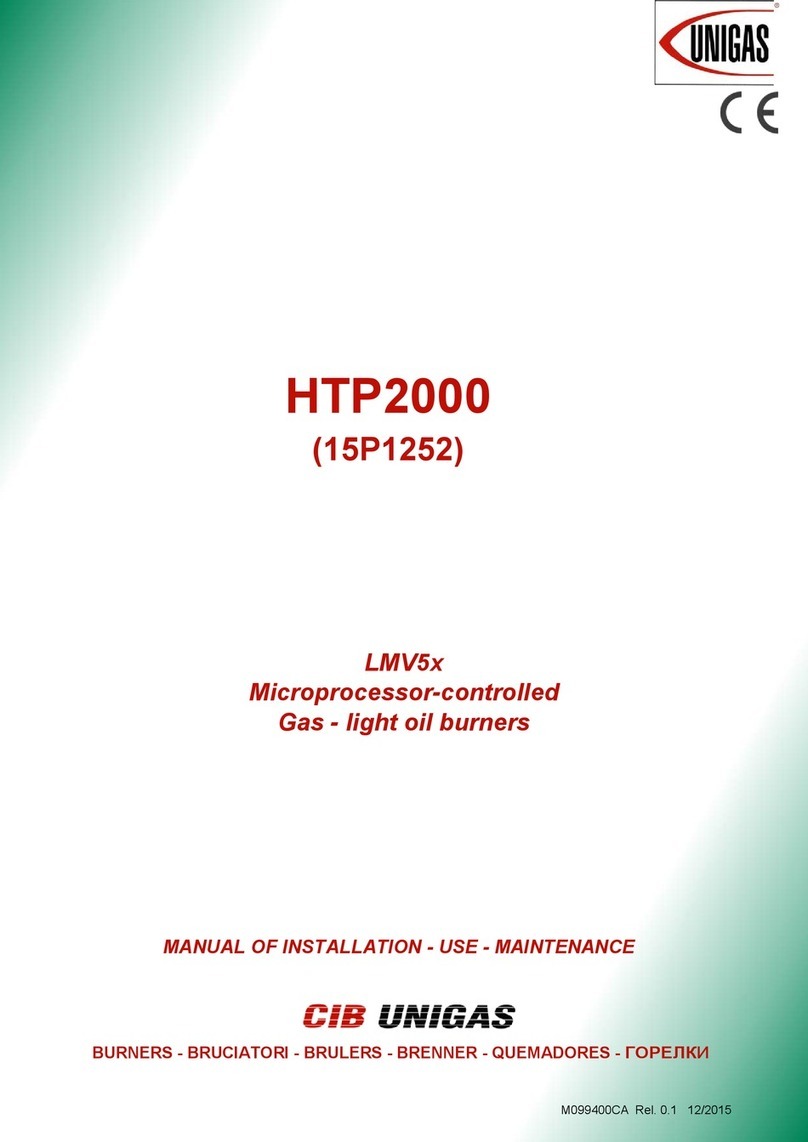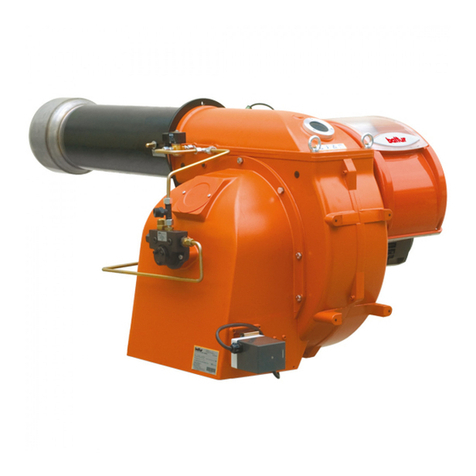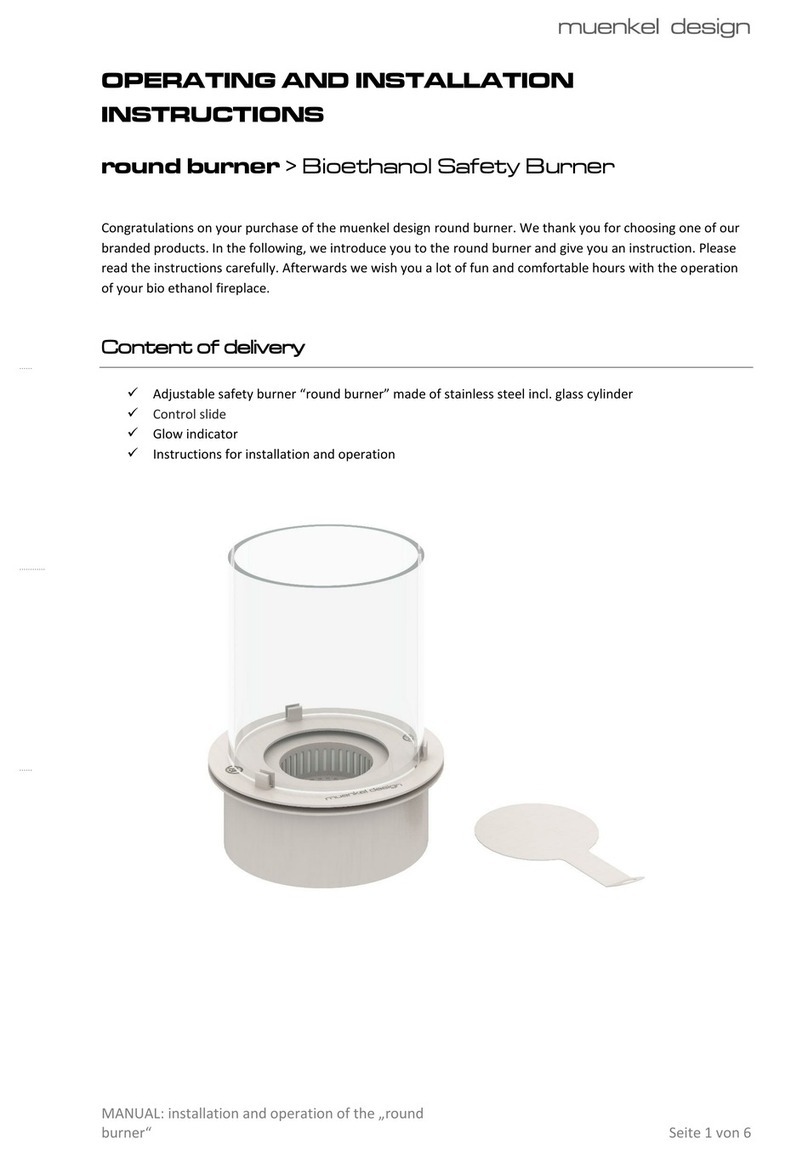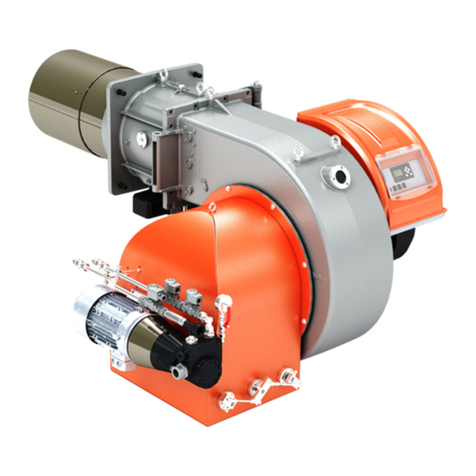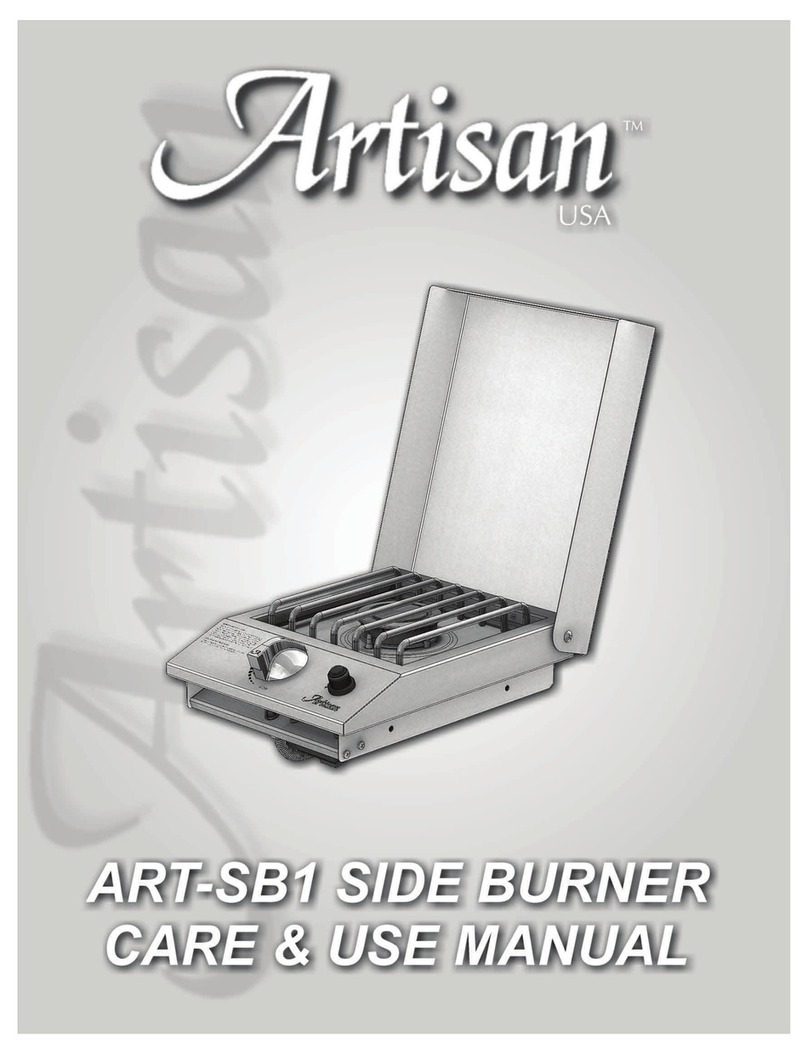If the burner piping must be rearranged because of space
limitations, be sure to carry out the general arrangement shown
in Figure 6. The Combination Gas Valve will operate and can be
installed in any position except up-side down.
When the burner is installed in jacketed equipment, it is
recommended that the Combination Gas Valve be left adjacent
to the burner within the vestibule. The Main Manual Shut-Off
Valve can be installed outside of the jacketed equipment.
___________________________
VII Main Gas Spud
The EC200 and EC300 burners are approved for use with
NATURAL or PROPANE gas only, and should be used only with
the gas specified on rating plate.
A Standard Model EC Series Economite is shipped ready
for NATURAL gas and is field convertible to PROPANE gas, see
Table 3.
As shipped, the EC200 has no spud installed, manifold
pressure set at 4.1" w.c., air restrictors off and the air shutter full
open. As shipped the EC 300 has no spud installed, manifold
pressure set at 4.0" w.c., air restrictors off and the air shutter full
open. OEM applications will be set based on the equipment
requirements.
If the required firing rate does not fall within the range of
the installed orifice, or if converting to PROPANE gas, use
Table 3 to select the spud with the correct orifice size (stamped
in inch diameter) for the desired capacity from the spare orifice
bag assembly.
To change the orifice, turn off the Main Manual Shut-Off
Valve and the main electric to the burner. Refer to piping
diagram, Figure 6, to locate the orifice location if required.
WARNING: Reposition the combustion air shutter for
the maximum firing rate of the selected orifice capacity
range.
CAUTION: The approximate air and gas settings
described below are for initial start-up only. Final start-up
settings must be made in accordance with Section VIII,
Burner Set-Up/Adjustment Instructions for the manifold gas
pressure are detailed in Section XIII, Combination Gas
Valve. ___________________________
VIII - Burner Set-Up/Adjustment
WARNING: Ignition is automatic. Make spark
observations into combustion chamber only with Main
Manual Shut-Off Valve closed. Confirm that gas
utilization equipment does not contain any
accumulated gases. Purge as described in Step 10
below.
1.Before burner start up, be sure to study and familiarize
yourself with the exact sequence of operation and all other
details of this burner and the gas utilization equipment.
2.Check the burner piping and valves for gas leaks by
applying a weak liquid soap solution to unions and joints
with the gas supply on. Leakage will be indicated by the
appearance of soap bubbles. Locate and correct all gas
leaks before proceeding.
3.Purge the air from the gas supply line to expedite the first
light off.
4.Ensure the gas utilization equipment is in the proper
operating condition.
5.Attach two gas manometers to the burner. Connect one
to the inlet pressure tap of the gas valve and the other to
the outlet pressure tap of the gas valve.
6.Connect a microampmeter to the ignition controller
to monitor the flame signal during the start up process.
Refer to the ignition control specification sheet that is
supplied with the burner for proper flame signal
requirements and sequence of control operation.
NOTE: Midco International reserves the right to change
ignition controller or other components without notice.
7.Set the burner air shutter to the proper setting according
to the recommended data in Table 3 for zero draft
condition.`
8.To RE-SET the Electronic Burner Control a manual re-set
is required. Turn the operating control to Off or set the
thermostat below room temperature for at least 30
seconds, or remove the 24v for a
period of 5 seconds, see Section XIV,
Electronic Burner Control.
9. Confirm that Main Manual
Shut-Off Valve is open. Turn Manual
Gas Cock Knob on Combination Gas
Valve to ON.
CAUTION: Purge gas to outside
the building. Do not purge into the
gas utilization equipment.
10. Turn the combination valve knob
on. Turn the burner power on. Turn
operating control to ON or set
thermostat above room temperature.
After four seconds the blower motor
will be start to purge the combustion
chamber. Main flame should come on
after a 30 second pre-purge.
Part 1 Installation
EC 200 Natural Gas
Heat Input
BTU/Hr Manifold Gas
Pressure "w.c.
70,000
100,000
150,000
*200,000
2.6
1.0
2.6
4.1
Air Shutter
Position
1.0
2.0
7.0
9.0
Orifice
Size
0.173"
None
None
None
Air
Restrictor
On
On
On
None
Propane Gas
Manifold Gas
Pressure "w.c.
1.2
2.3
1.2
1.8
Air Shutter
Position
1.0
2.0
7.5
9.0
Orifice
Size
0.173"
0.173"
None
None
Air
Restrictor
On
On
On
None
EC 300 Natural Gas
Heat Input
BTU/Hr Manifold Gas
Pressure "w.c.
90,000
150,000
200,000
250,000
*300,000
2.5
1.3
2.2
2.9
4.0
Air Shutter
Position
1.0
3.0
6.5
6.0
9.0
Orifice
Size
0.173"
None
None
None
None
Air
Restrictor
On
On
On
None
None
Propane Gas
Manifold Gas
Pressure "w.c.
1.1
2.8
1.2
1.6
2.1
Air Shutter
Position
1.0
3.0
6.0
6.0
9.0
Orifice
Size
0.173"
0.173"
None
None
None
Air
Restrictor
On
On
On
None
None
Table 3: Recommended Air Shutter Setting at Zero Draft Conditions and Orifice Size
*As Shipped from Factory
Midco International Inc. - Chicago IL - www.midcointernational.com
6
